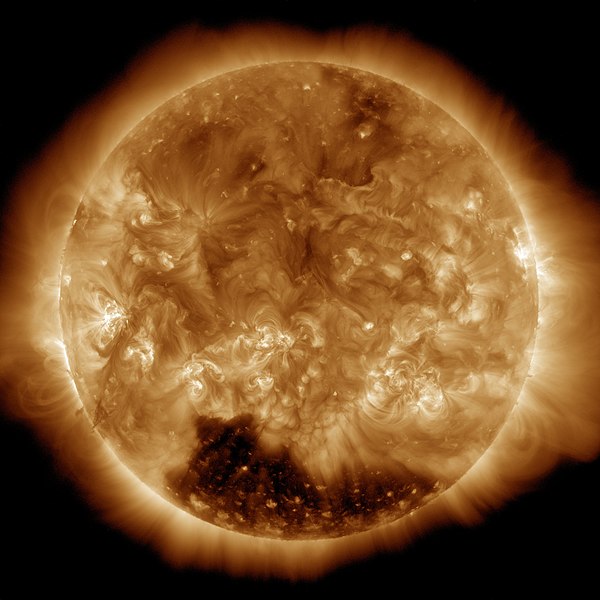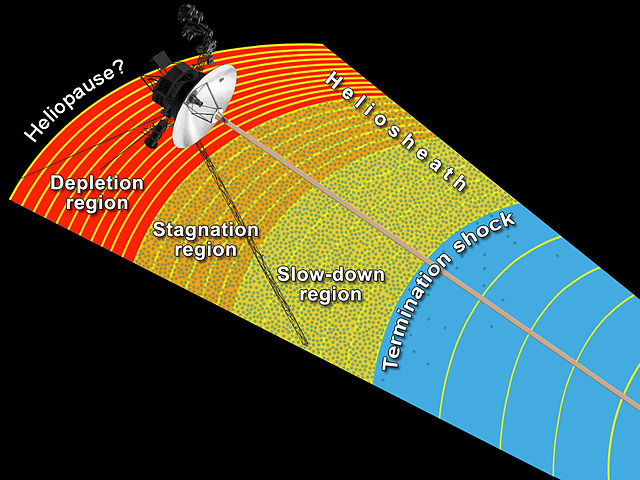Energetic Neutral Atom (ENA) imaging is a technology used to create global images of otherwise invisible phenomena in the magnetospheres of planets and throughout the heliosphere.
A hot plasma ion 'steals' charge from a cold neutral atom to become an Energetic Neutral Atom (ENA)
The ENA leaves the charge exchange in a straight line with the velocity of the original plasma ion.
ENA energies are categorized according to instrumentation, not the ENA source
Launched in 2008, NASA TWINS currently uses ENA detectors on twin satellites to produce 3-D images of Earth's Magnetosphere
The heliosphere is the magnetosphere, astrosphere, and outermost atmospheric layer of the Sun. It takes the shape of a vast, tailed bubble-like region of space. In plasma physics terms, it is the cavity formed by the Sun in the surrounding interstellar medium. The "bubble" of the heliosphere is continuously "inflated" by plasma originating from the Sun, known as the solar wind. Outside the heliosphere, this solar plasma gives way to the interstellar plasma permeating the Milky Way. As part of the interplanetary magnetic field, the heliosphere shields the Solar System from significant amounts of cosmic ionizing radiation; uncharged gamma rays are, however, not affected. Its name was likely coined by Alexander J. Dessler, who is credited with the first use of the word in the scientific literature in 1967. The scientific study of the heliosphere is heliophysics, which includes space weather and space climate.
The Sun photographed at a wavelength of 19.3 nanometers (ultraviolet)
Illustration of the heliosphere as released on 28 June 2013 which incorporates results from the Voyager spacecraft. The heliosheath is between the termination shock and the heliopause.
The bubble-like heliosphere moving through the interstellar medium.
Energetic neutral atom (ENA) detection is more concentrated in one direction.








